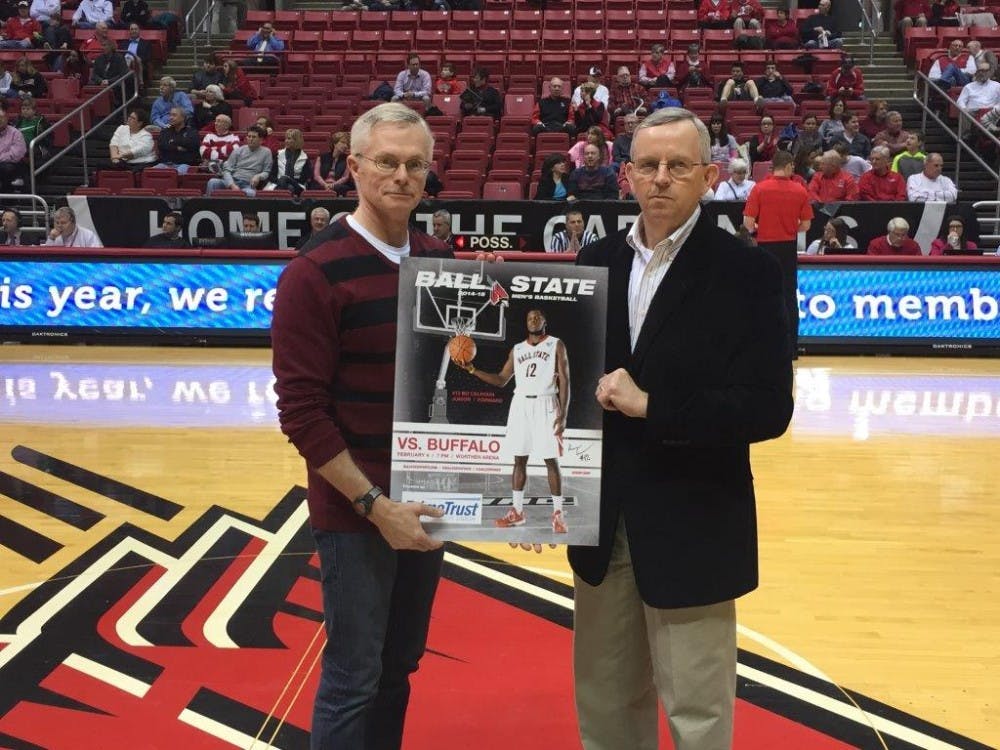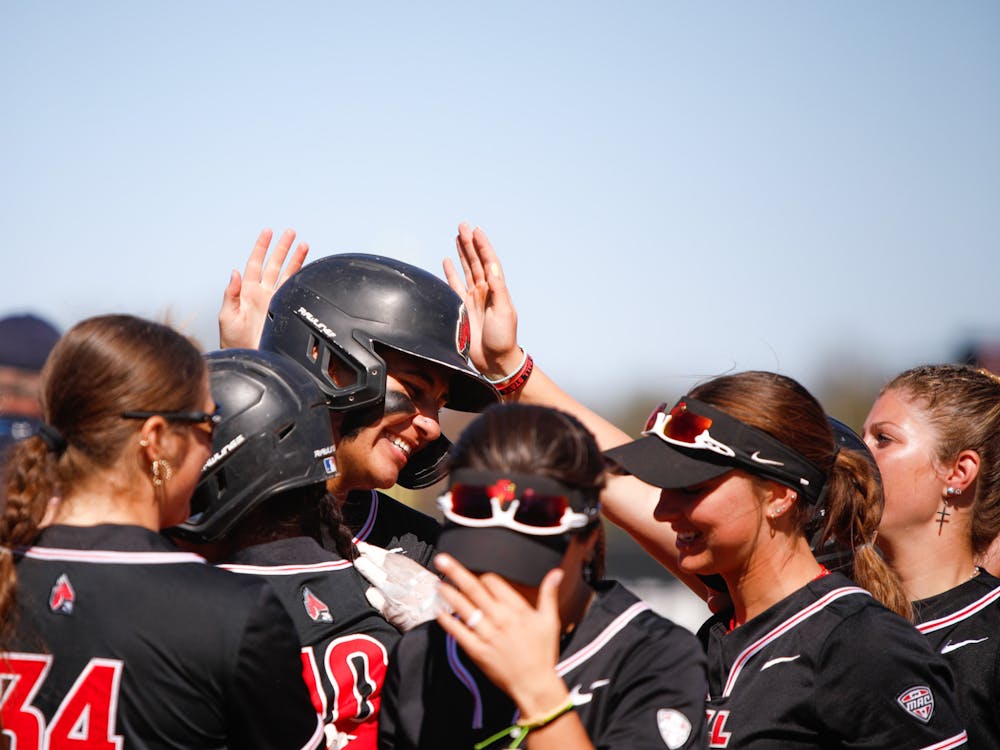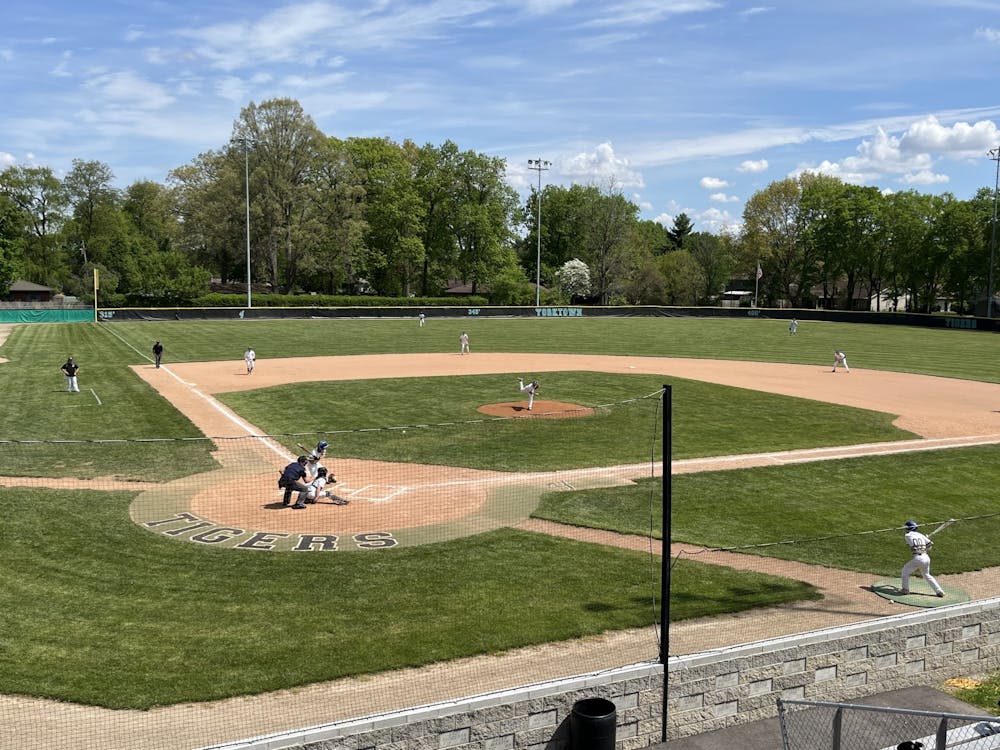Family
Wife Kathryn “Kitty,” Spanish professor/teacher
Two children: son Kraig (31) and daughter Madison (29)
Education
Associate degree in 1972 from Ferrum College in Virginia
Bachelor’s degree in 1974 from Concord College in West Virginia
Master’s degree in education in 1983 from Lynchburg College in Virginia
Doctoral studies at University of Virginia and Eastern Kentucky University
Professional Service
Member of the NCAA Football Championship Committee and the NCAA Football Issues Committee, 2007 to 2012
Member of two NCAA Peer Review Certification Teams
As a student-athlete at Ferrum Junior College in Virginia, Mark Sandy started in engineering before changing his major to math.
A job as an athletic director didn’t interest him, as aspirations of becoming an all-time great college basketball coach filled his head.
“When I was growing up, I had no knowledge what athletic directors did … ” he said. “I just wanted to be a head basketball coach in the Atlantic Coast Conference … I wanted to be the next [former North Carolina men’s basketball head coach] Dean Smith or [Duke men’s basketball head coach] Mike Krzyzewski.”
After beginning a career in teaching and coaching that included a stop at Wake Forest, an ACC school, Sandy got his start in athletics at Miami (OH) in 1997. He later took the same position at Richmond before earning his first athletic director job at Eastern Kentucky, where he spent 10 years.
Ball State hired Sandy on Jan. 9 to oversee its athletic department following his time at Eastern Kentucky. His tenure, which began on Feb. 1, ended a four-month search that came after the departure of former Ball State athletic director Bill Scholl, who took over the athletic director position at Marquette in October.
Sandy said the opportunity to join a school in the Mid-American Conference played a key role in his decision.
“I think when you have an opportunity to come to an FBS school ... that really does have that nice balance between student and athlete, I think it’s very attractive,” he said. “Talking with [President Paul Ferguson] … it was exciting to think about the change.”
Change is nothing new in Sandy’s career — one that was “absolutely not” centered around the idea of becoming an athletic director.
THE JOURNEY
Despite a small stature growing up, Sandy was a captain of his high school basketball team and went on to play at the collegiate level.
He was a member of a Ferrum program that went to the Junior College National Championships two years in a row. The second time, losing to an undefeated Vincennes team from Indiana in the title game.
Despite not starting a game in two years, Sandy received the program’s Student-Athlete Academic and Leadership Award.
“Getting the award was kind of a shock to me, and I think it surprised a few people,” Sandy said.
A role in leadership positions didn’t end there, as Sandy continued his education while beginning his professional career in various student services positions at Virginia Military Institute in 1982.
Sandy's overall career path included many stops, each one teaching him more and more along the way.
Sandy said the enthusiasm was there for every new stop, but there was also concern about doing a job for the first time.
“A lot of times in leadership and growth, you learn what not to do as well as what to do,” he said. “There’s a lot of information coming and you can’t handle all that at one time. You say ‘Oh, I’ve done that before. I’ll put that over here on the side, that’s not as vital as these three things in the first three months or six months on the job.’”
Taking over in Muncie will be different than Richmond, Ky. But Sandy’s lengthy experience as the head of an athletic program will help him make decisions based on where Ball State is headed.
His analysis of the job came up front, citing the need to make those decisions before the hiring process takes place. He said the end of the process yields thinking further about friends, as well as student-athletes and coaches that he established connections with.
The 62-year-old is ready to take on his new challenge with Ball State.
“I’m not looking back,” Sandy said. “I’m just looking forward.”
MAKING CONNECTIONS
His first two weeks in Muncie, and for some time hereafter, Sandy and his wife will be living in a hotel while going through the process of closing on a house close to campus — a predicament that would likely be much more difficult if their children weren’t grown and living on their own.
“My wife is currently vitally important, because it’s just the two of us … When [the children] were younger, obviously, where we went, what jobs I took, what we did — those decisions were more closely related to their age.”
Sandy said his wife is even more vital in coming to a new place and job where building relationships is important.
“She’s the entertainer — she likes to have people over, she comes to all the games, she’s a vital part of how we integrate ourselves into the community … Things we can do as a family that I can’t do by myself — she’s right there as co-No. 1,” he said.
Sandy also said he’s waiting for the cold weather to break to meet some people and attend events associated with the community.
Community service has been a big part of Sandy’s career, dating back to the ideals instilled in him at a young age by his parents.
Those same ideals are what Sandy taught to his own children.
“We certainly think community involvement personally is vital,” he said. “I don’t think people will see you as a new member of the community if you only work at the university and aren’t seen and don’t volunteer and help downtown. I think that’s important; plus, it’s what I like to do.”
Sandy served as a University chair for United Way campaign, and was a board member for the Richmond Habitat for Humanity chapter and Lexington Country Club.
A desire for community involvement aligns perfectly with a department many look up to.
Sandy said athletics is a fortunate position because student-athletes can serve as “role models” for kids in the area, helping with reading programs and fitness. The relationship with the community is part of what makes for a successful and unique experience.
HIS MISSION
Sandy’s campaign as athletic director is centered around the student-athlete experience, building attendance and creating a winning culture.
Although his plans are unique, he may not be all that different than his predecessor.
“[Sandy and Scholl] both really want to develop the people that report to them,” said Brian Hardin, deputy athletics director and former interim athletic director. “You’ll hear them both talk about servant leadership … It fits in perfectly with President Ferguson’s vision for the future and how he likes to lead.”
Hardin was a member of the 12-person committee tasked with presenting Ferguson with the final candidates.
He said Sandy was a breath of fresh air in the interviewing process thanks to his resume and experience outside of athletics.
And with Ferguson’s outlook for the future of the university, Sandy’s case to head the athletic department looked even stronger.
“President Ferguson wants a very collaborative conversation where everyone is kind of talking across the table to each other … ” Hardin said. “I think that Mark would be able to step into that room and provide more to the conversation than anyone we had in our pool.”
Ferguson addressed the importance of winning and athletics at his introductory conference. While Sandy wants to improve the overall athletic experience and graduation rates for student-athletes, winning is the driving force at the end of the day.
With the state of the NCAA and the changes coming forth, Hardin said it’s important to have someone to lead through the choppy waters.
“You’ve got to get the right resources, scholarships, recruiting dollars and facilities for your coaches to be successful,” Sandy said. “You can’t expect them to win if what they have compared to other people in the conference isn’t as good.”
Sandy’s time as a student-athlete helped shape his emphasis on their well-being to an athletic program.
Through several coaches he learned the attitudes it would take for a student-athlete to be successful and help lead a program.
“[Sandy] will be the biggest advocate for our coaches and our student-athletes on this campus,” Hardin said. “That will, in time, pay off and we’ll have great success. He did it at Eastern Kentucky, and I have no doubt he’ll do it at Ball State.”






